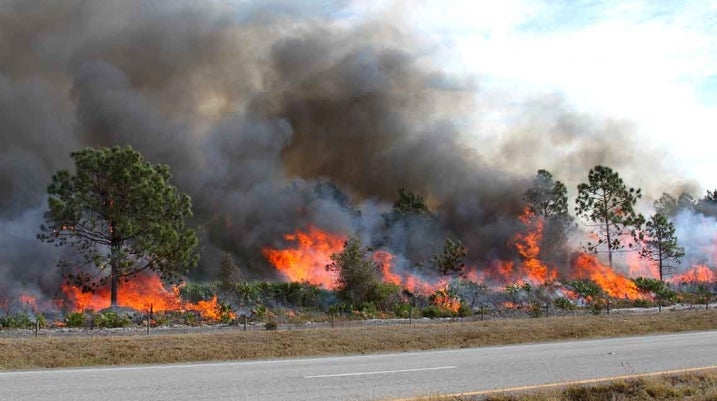How Can St. Petersburg Residents Protect Their Property During Wildfire Season?

Nearly 80 acres of Egmont Key, an island located off the coast of St. Petersburg, were torched last week after a raging wildfire. The fire on Egmont Key was sparked by lightning and continued for several days. As Egmont Key is a Florida State Park and has no human residents, there were no injuries, but the wildfire serves as a reminder to locals of the Tampa Bay area of the risks faced during Florida wildfire season.
This year’s wildfire season is especially severe, making it imperative for locals to review wildfire safety tips and ensure their properties are as safe as they can be in the event of a wildfire or uncontrolled prescribed fire.
Here are some ways locals here in St. Petersburg can ensure their properties are as wildfire-safe as possible.
Create a Defensible Space
Creating a defensible space is one of your best methods of protecting your property, according to Florida’s wildfire mitigation specialists. A defensible space is defined as the circumference of 30 to 100 feet around your home where potential wildfire fuel should be reduced and removed. This involves thinning and removing trees, vegetation, and dead plant material that would allow a wildfire to spread to your home, as well as removing combustible materials and wood structures.
Plant Fire-Resistant Plants
Dry and dead vegetation is a major risk to your property. After removing it, opt to plant fire-resistant plants approved by Firewise for Florida landscaping. Succulent plants are more resistant to fire than non-succulent plants, so plants like agave and stonecrop are ideal. Other fire-resistant plants include evergreen and deciduous plants such as red yucca shrubs, pineapple guava, azalea, and St. Augustinegrass.
Install Roof-Mounted Fire Sprinklers
In areas that are extremely wildfire prone, the Federal Emergency Management Agency supplies grants for the installation of exterior roof-mounted fire sprinklers. These sprinklers are used defensively to avoid the spread of fire to your home and other neighboring homes and businesses. Exterior roof-mounted fire sprinklers are turned on in the case of an evacuation, and as they are attached to an independent water system, they are effective even if municipal power sources are affected by wildfire.
Update Your Home
The goal of protecting your property is to prevent the wildfire from reaching your home. However, if the fire does manage to spread through your property, it’s important to make sure it isn’t aided by combustible building materials. Roof coverings, crawlspaces, eaves, and gutters are among the most likely parts of a home to be fire prone, due either to combustible materials or accumulation of debris. If you live in a wildfire-prone area like Central Florida, it’s essential to regularly clean your gutters and home to remove accumulated vegetative debris. Be sure to also update your roof coverings and exterior siding with Class “A” fire-resistant building materials.
If You See Fire, Report It
Above all else, if you see the signs of a wildfire in your area, and have not received an evacuation notice reporting it, call 911 immediately. Never assume that someone else has reported the wildfire, as this could easily not be the case, resulting in the wildfire spreading much further before the authorities can step in. By reporting the wildfire, you may potentially be saving homes, businesses, and lives from a spreading wildfire.
But what if a blaze does destroy your home — wildfire or otherwise — and your insurance company is giving you a hard time? Read more to learn how our insurance attorneys work to fight for your full insurance claim payout to ensure all repairs and damages are covered. If you’re prepared to file a claim, fill out our free, no-risk case evaluation form today.
Injured? Getting the compensation you deserve starts here.

Injured?
Not sure what to do next?
We'll guide you through everything you need to know.